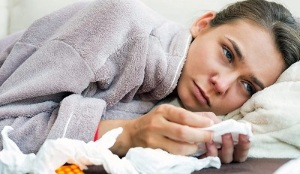About 80% of the world's population is infected with human papillomavirus. HPV infection can cause not only harmless papillomas in the body, but also warts of the genitals, as well as plants that can lead to harmful degradation, so it is important to know how HPV is transmitted. Perhaps this knowledge will keep someone away from infectious diseases and protect them from dangerous diseases such as cancer of the cervix, vulva, vagina, anal canal, genitals, and even breast cancer. In this article we will tell you about HPV: how it is transmitted, risk factors and preventive measures.
How is human papillomavirus transmitted?

First, it must be said that papillomas are transmitted through the epidermis and saliva. At the same time, the infection may not be felt for some time, and may appear only with the appearance of genital warts and papillomas with a decrease in immunity.
If we talk about how the papilloma virus is transmitted, the risk of infection increases if the skin is injured, scratched and scratched.
Attention!Many people wonder if papilloma is inherited. No answer. Only when a family member becomes infected can the papilloma virus be passed from mother to child in everyday life or during childbirth.
The following ways of human-to-human transmission of a viral infection are known:
- It is transmitted through daily life, that is, through touch, common household items, and clothing. Infection can be transmitted through kissing.
- If a person has a papilloma of the genitals, it can be through sexual intercourse, ie unprotected sex.
- Self-infection, shaving, epilation and other skin lesions are possible. Because papillomas are contagious to healthy cells around the skin, humans can transmit the virus from diseased areas of the body to healthy ones.
- The vertical route of infection is the transmission of a congenital infection from mother to child.
- Usually, the infection occurs during a blood transfusion, surgically removing neoplasms caused by HPV. It also prevents infection in beauty salons, manicure rooms, baths, saunas and swimming pools that do not follow the rules of asepsis.
If you know how to get papilloma, 70% of men are sexually infected. When there is an epithelial neoplasm on the lips or genitals, the probability of infection is almost 90%. Also, the presence of a condom, while reducing its risk of infection, does not guarantee 100 percent protection, as HPV can enter the skin of the hand and other parts of the body through microtrauma. In addition, condylomata can be localized in the groin or gastrointestinal tract, where they do not prevent direct contact with a condom partner.
Important!If one partner is a carrier of the virus but does not have papillomas, warts, or genital warts, the other partner's infection is reduced.

If you list all the ways in which a newborn baby can be infected with the papillomavirus, an intrauterine infection is unlikely because the virus is not absorbed into the bloodstream and is protected by the amniotic fluid, bladder and placenta. However, in medical practice, there have been rare cases of intrauterine infection with damage to the placenta and fetal bladder.
For women who are planning a pregnancy, it is important to know whether the baby's father is infected or not, and whether the mother-to-be can be infected, because the genitals formed during pregnancy are very dangerous for the baby. If the baby becomes infected during childbirth, there is a risk of laryngeal papillomatosis and subsequent suffocation. Because the infection is transmitted through saliva, the presence of papillomas, genital warts and warts in the mouth and mucous membranes of the oral cavity should be taken into account, as a woman can be infected through oral sex.
If a family member has papilloma and how it is transmitted in everyday life, all family members should know:
- The virus can enter the skin microtrauma through common bedding, towels, soap, cosmetics, towels and other personal items;
- Infection with saliva can occur when using a toothbrush, glasses or other tools;
- can be transmitted through clothing and other household items.
Risk factors
We know how to get human papillomavirus, but it is important to know not only how it is transmitted, but also the risk of contracting the papillomavirus.
Thus, human papillomavirus enters the skin and mucous membranes against the background of the following provocative factors:
- In men, children and women, the infection may occur against a background of decreased immunity. This can be caused by a common cold or a sore throat.
- When the intestinal or vaginal microflora is damaged, the risk of HPV increases. In the first case, the general immunity is impaired, in the second case, the body's local defenses are reduced and the likelihood of sexual intercourse increases.
- Infectious genital tract is often the cause of infection against the background of other sexually transmitted diseases (syphilis, gonorrhea, trichomoniasis).
- Any method of infection can be dangerous to a person when the body is weakened by the disease.
- There is no doubt that papillomas are contagious. The virus can be easily absorbed into the cells of a healthy person if his or her defenses against stress, energy loss, overwork, or depression are impaired.

Important!Various viruses are easily transmitted to men and women with bad habits (smoking, alcohol). Women taking combined contraceptives have a significantly higher risk of infection.
The following conditions and diseases are factors in sexually transmitted infections:
- early onset of sexual activity;
- prostitution;
- Frequent change of sexual partners;
- perverted sex life;
- history of sexually transmitted diseases;
- over 35 years of age;
- pathology of the cervix;
- immune deficiency.
prevention
We have found out how human papillomavirus (women, men and children) is transmitted, and now we need to consider its prevention measures. It should be immediately noted that preventive vaccination is an effective way to prevent the spread of infectious diseases. To date, two types of vaccines for this infection are known. They protect against the most dangerous oncogenic strains of viral infections. However, the high effectiveness of such protection is observed only at an early age during vaccination, before sexual intercourse or before infection with one of the HPV strains.
As for other prevention methods, no one has ruled out the rules of hygiene, condom use, sex life and abstinence from bad habits. Maintaining the strength of the immune system is beneficial: eating right, getting angry, exercising, walking in the fresh air, and taking vitamins from time to time.














































































